Experiencing Sahiyo’s Activist Retreat in Mumbai
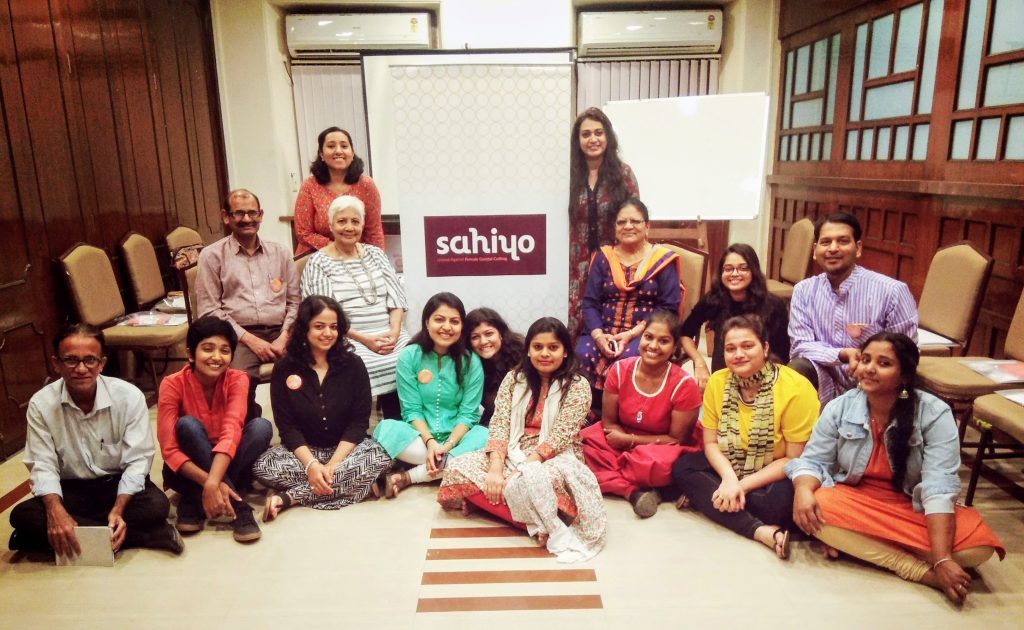
By Xenobia Country of Residence: India There are those who talk about change, and then there are those who do things and bring about the change. I would like to tell you about the time I decided to be a part of the Sahiyo’s Activist Retreat in Mumbai, and met such wonderful people who, in my eyes, were nothing short of superwomen. I cannot even begin to describe how amazing it is to meet like-minded people all driven by the same cause. It is honestly inexplicable. In today’s times, do you know what good, honest peer support feeling is like? Let me tell you: it was out of this world amazing! Did a couple of seemingly insignificant days change my life? Yes, they did. Prior to this event, was I feeling anxious and apprehensive about what it would turn out to be like? Oh, extremely. Was I nervous? Yes. Was I also curious about what would I take away from this retreat? Yes. Did I think it was going to be all about a bunch of women getting together to purely rebel against a cause? I will admit, yes. I knew about Sahiyo, and the cause that they are fighting for. I admired and respected them because I had been fighting for the same cause all my life, too, but silently. Many members of the Bohra community do not react well to independent thinkers, so it takes a lot of courage and true liberation to speak your mind on a public platform. Naturally, one ‘black sheep’ tends to have heard about the other. But immense respect for them aside, I was partly curious about what I would really learn here, and partly interested in what could be done to rightly channel the feelings I felt toward the people who endorse female genital mutilation (FGM). Needless to say, I couldn’t stop talking about this retreat when I returned home! There were some brilliant, fantastic people there from all walks of life, sharing their experiences, sharing their stories and how they heard of FGM, how it has impacted their lives, and what they are doing about it. Our co-hosts Insia and Aarefa were warm as ever, right from introductions and group bonding activities, to efficiently addressing counter arguments and introducing us to a world of relevant introspection, as opposed to traditional garish rebelling. There was also a talk given by a reputed gynaecologist, where we learned so many essential truths about the details of FGM that no one else talks about. So enlightening! It was as if there was a strange connection between all of us toward the end of the program. It’s not news that Bohras suffer from a major identity crisis anyway, considering most cultural aspects are borrowed from different parts of the world with no real roots anywhere. For someone who always found it hard to really fit in anywhere, it was as if I had found home at last. In spite of everyone at the retreat coming from such different backgrounds, locations and mindsets, it was really amazing. I, personally, have always felt very strongly about FGM/C and the concept of a random third person deciding what should be done with my body without my consent. But this experience and interaction has not only changed the way I see things, but has also made my resolve and conviction stronger – about fighting for every girl child out there, subjected to any such torture and abuse, until I have no life left in me, irrespective of how long it takes. For showing me how to efficiently channel all that I feel toward all forms of injustice done to women, and for this beautiful chapter of my life, I will be forever grateful to Sahiyo.
My inner healing at Sahiyo’s Activist Retreat in the U.S.
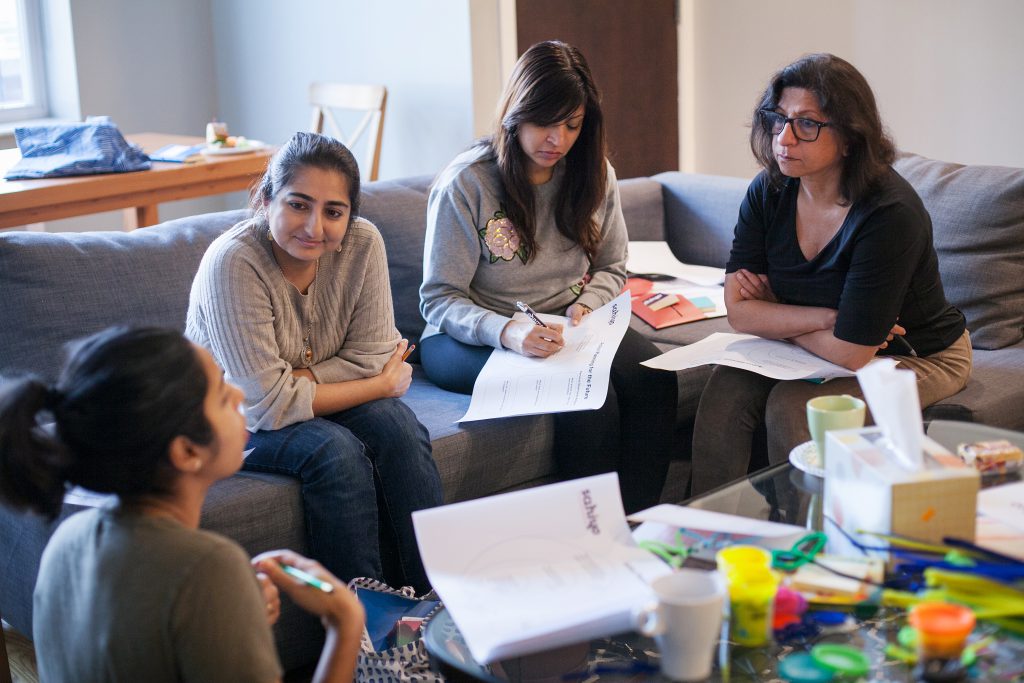
By Anonymous Country: United StatesAge: 34 To be honest, it was hard for me to make the decision to go to the Sahiyo Activist Retreat earlier this year. I grew up in the Dawoodi Bohra community in India, and having had my share of challenges with the community that involved threats to my family, I felt like I didn’t have the courage within me to start another battle that involved me fighting against FGM/khatna. But I knew deep down inside that none of my battles with my community had ever ended, and if I stopped speaking up now, another girl somewhere else would have to suffer like me. I have been away from India for the last 7 years, and it took a retreat like this one for me to realise that I had not interacted with a single person from within the Bohra community here in the US since I moved here, and how much I had missed that. My only experiences of being with other Bohra women was in India, either at a religious prayer service or ceremony or at a Bohra women’s ‘meneej’ (kitty party) group that I was forced into by my mother and friends. I had never had an opportunity to be in a room full of Bohra women, where we could have an open, honest and authentic discussion about the challenges women faced in the community, and identify ways we could empower each other, stand up against the injustices done to us, and fight for change within the community. The Sahiyo Activist Retreat allowed for that and much more. Since most of my experiences were in India, I was keen on learning about how the community functioned here. And through my very first interactions and impressions, I knew that it was no different here and that the community was as strict, perhaps even more here than in India. It was also clear from the start that every single woman present in the room including myself, had shared hopes from the retreat; to find a space where we could openly share our FGM /khatna stories, to build a strong support group, to gain knowledge and tools to confidently speak up against FGM/khatna, and most importantly, to find a space to heal. The agenda for the two-day workshop was packed but allowed enough time for us to bond with each other, and my healing began almost immediately. The workshop had a bottom-up approach, wherein each participant got to share their stories and all the work that they had already been doing to end FGM/ khatna in the community. The sessions that followed helped us further our knowledge and understanding of FGM/Khatna by providing us with in-depth studies and evaluations, effective communication tools, and defining ways to support activists inside and outside the community worldwide. The discussion that stood out for me the most was the one that focused on community and survivor-led movements, and the importance of having Bohra men and women from within the community fighting to end FGM/khatna. I have always believed that for any change to truly take place, all the effort and groundwork needs to happen by individuals who represent the community, who understand the systems, history, culture, and nuances of the community, and that means each one of us Bohra men and women. If we want to end FGM/Khatna, each one of us needs to take leadership and ownership of this problem. Men need to become allies for women, and women need to become allies for other women in the community. Through breakout sessions and one-on-one conversations, we came up with action plans and ways in which each one of us could contribute to this movement. And of course there were informal post-dinner ramblings, debates and heated discussions on FGM/khatna, and many other women’s issues faced by us in the community. Three months later, I sit with this fire within me that began during the retreat. I find myself more at ease when talking about FGM/khatna with friends and work colleagues. I still haven’t been able to openly talk about it, for I fear the backlash my parents will face in the community in India, but I’m confident that that will also change someday. I am now helping coordinate logistics for a storytelling workshop that will educate and empower 8 women participants to become powerful and effective storytellers. I am also excited to organize a ‘thaal pe charcha’ event during the summer with the hope to bring both, women and men, to have an informal dialogue about FGM/khatna, and learn from the findings provided by Sahiyo. Lastly, my inner healing that began during the retreat continues to change me in positive ways. It is allowing me to let go of my past, and channel my energy to be a better activist, to not dwell in self-pity, but to become a strong ally and force of change within the community.
The U.S. Sahiyo retreat taught me there are different ways of being Bohri in America, and we can all end FGC
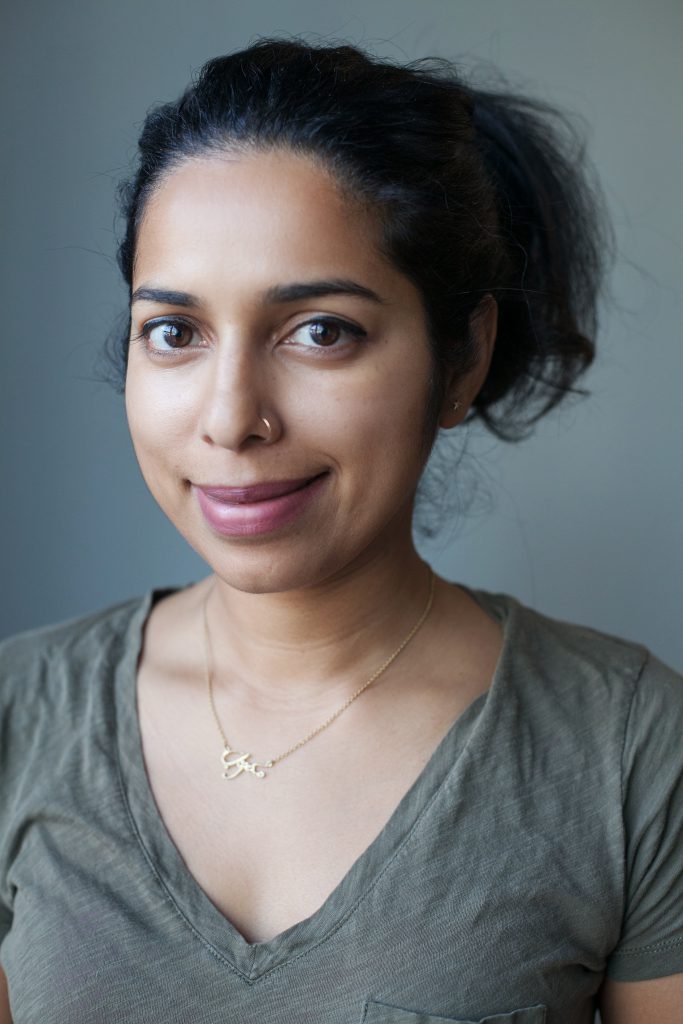
By Alisha Bhagat Khatna, and Female Genital Cutting (FGC) evoke strong responses. It is seen as a human rights violation, is attributed to the “backwardness” of Islamic peoples, and is a critical part of cultural heritage. For those of us within the Bohra community, our feelings are generally much more complicated. Even for those of us who oppose the practice, we find it important to work within cultural norms to advocate against it. Changing an entrenched cultural practice can be very challenging, even if it is so clearly the right thing to do. Everyone at the Sahiyo activist retreat in New York was either a survivor of khatna or a close family member of a survivor. When we talk about the people in our community who have undergone khatna, we aren’t talking about a faceless mass, we are speaking about our mothers, our sisters, our friends, and ourselves. Everyone came to the retreat with powerful stories about when they first found out about this practice (often when they first underwent it) and what drove them to advocate against it. [youtube url=”https://youtu.be/t6zuT8e3XDI”] The retreat was very emotional. It was so comforting and joyous to spend time with people who felt “just like me” in that we came from the same community and grew up with the same foods and the same quirks. It was a safe place to share stories. Some of the attendees are not yet open about their participation in Sahiyo and the retreat offered them a supportive environment to think about the role they might play in creating social change. Additionally, people shared a lot of frustration and sadness. Many of the activists experienced negative pushback from their loved ones and their communities regarding FGC activism. Relatives no longer spoke to them and they were harassed by internet trolls. The retreat was a nurturing safe space. Activism can be very isolating and the retreat enabled many of us to share our experiences with people who understood the background we came from. These emotional connections were infinitely valuable. I left the day feeling strengthened. Not only do I feel there is a like-minded community of activists who I align with, I feel as though the tactics being used are culturally aware and thoughtful. We left with tangible actions to take forward to our communities and loved ones. I also felt like I got to see many different ways of being Bohri in America. We all have different levels of religiousness and practice, but nonetheless, we all think that we can come together and make a difference in ending this harmful practice. To learn more about the U.S. Bohra Activist Retreat, read the report!
My Sahiyo U.S. Activists Retreat Reflection
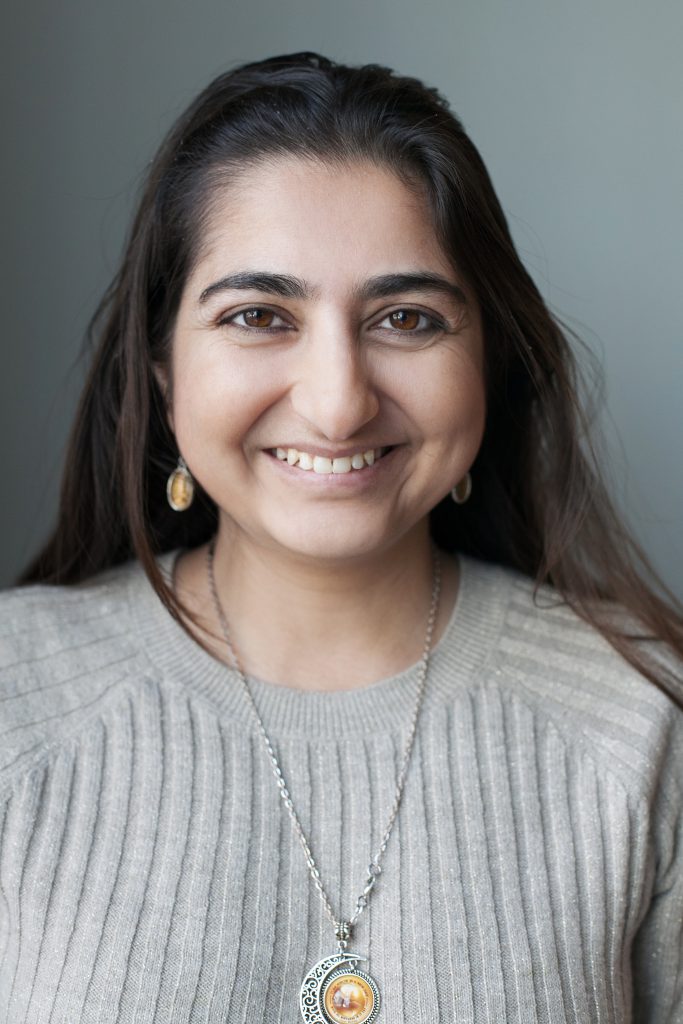
By Maryah Haidery Growing up as a member of the Dawoodi Bohra Community in the United States is a challenging experience, especially for women. It’s like precariously walking across a tightrope while trying to balance two vastly different worlds. In one world, there are the positive benefits that come from belonging to a community rich with tradition and ritual, with a strong emphasis on family. In the other world, there are the progressive ideas that come from living in a country (United States) whose core values emphasize reason and individualism and women’s rights. Usually, those of us who grew up here in the U.S. can find a way to reconcile the two worlds, but certain Bohri practices like khatna or FGC can make that very difficult and force those of us who really care about the values in the U.S. world to call into question everything we knew or thought we knew about the first world, the Bohra world. [youtube url=”https://youtu.be/jhZa_-_rQLo”] When I realized that I was cut as a child and that this practice was not common among other girls, not even most other Muslim girls, I felt very isolated and “different”. The isolation was made more acute because khatna was a subject that was never spoken about, not even among other girls who were my age. When my sister first told me about the existence of groups like Sahiyo and We Speak Out, I finally felt like I was not alone, and by telling my story of undergoing khatna, I could start the process of healing and perhaps give a voice to those of us who are not yet ready to share their stories. It was in this spirit that I attended the first ever Sahiyo Activists Retreat this past January. I wanted to meet the brave women who had been the first to speak out openly against FGC and who allowed the rest of us to finally have a platform to do so. I also wanted to learn more about the medical, legal and religious aspects of the practice so that I could talk about it with both the media and members of the community in a way that was challenging the practice without necessarily denigrating the people who chose to practice it. The retreat was so much more gratifying than anything I had expected. The retreat helped me to learn quite a lot about khatna, the power of storytelling and the challenges that FGC activists face. But more importantly, the retreat helped me learn quite a bit about myself and my need to feel validated and heard. The women I met at the retreat differed vastly in their ages and backgrounds. Some were from conservative jamaats [congregations] and some were from what I consider more liberal jamaats. Some were still pretty active in the community and others less so. Some felt ready to publicly share their stories, others were less comfortable. But they all had a story I could relate to in some way and they all shared a commitment to help end this practice for the next generation of Bohri girls. For me, speaking out about a practice like FGC has sometimes been challenging. Sometimes it has felt like the media and certain political groups have used my story to further their political motives while additionally, people in the community I care about have attacked me for being a traitor. It’s a journey that has felt scary and demoralizing and frustrating as much as the journey has felt empowering and worthwhile. That’s why being a part of this January retreat and learning that I was not alone in this journey was such a priceless experience. To learn more about the U.S. Bohra Activists Retreat, read the report!
My experience at Sahiyo’s first Activists Retreat in India
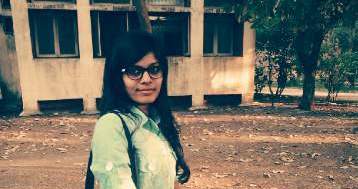
By Chandni ShiyalSahiyo administrative assistant One day before Sahiyo’s first Activists Retreat for Bohras held in February in Mumbai, I was a bit nervous about how it would pan out in terms of arrangement and its overall functioning. But at the same time, I was excited to meet many of the new participants who were supposed to come from outside Mumbai as well residing in Mumbai, with a common goal to bring an end to Female Genital Cutting (FGC). Surprisingly, on the day of retreat, as participants walked in one by one and we introduced ourselves to each other, I never felt as if we were meeting for the first time. Initially, we began with an ice-breaker activity where we formed a circle and each person turn by turn had to talk about one thing that made them proud about themselves. Others in the circle who shared the same experience or sentiment would then have to high-five the speaker. Almost all participants ended up high-fiving each other because all of them had similar pride in working towards gender equality, helping people in need, educating the girl child, ending FGC and so on. This activity led to higher comfort-levels amongst participants. The different sessions that followed this introduction dealt with the challenges people face and the best ways to tackle the issue of FGC by spreading awareness and strengthening communication. The sessions were quite interactive and participants actively participated and added their thoughts, suggestions and innovative ideas to eliminate FGC. The most motivating thing for me was that men also took keen interest and were very sensitive about the practice, in the belief that this issue is not just a women’s issue and we need the collective effort of both men and women to end FGC. Moreover, some of the participants belonged to the older age group, and their support to the movement to end FGC was a great achievement and inspiration for the younger generation. At the end of the training workshops, each and every one took responsibility to help the cause in their own ways, whether it involved spreading awareness at the college level, helping in creating videos and animations on FGC, approaching the masses at the village levels, writing articles in medical journals or approaching medical experts. The participants expressed the need to have more such retreats and workshops in the near future, which was proof to me that this retreat was a success.
I attended the U.S. Bohra Activist Retreat because I hope to see an end to FGM/C in my lifetime
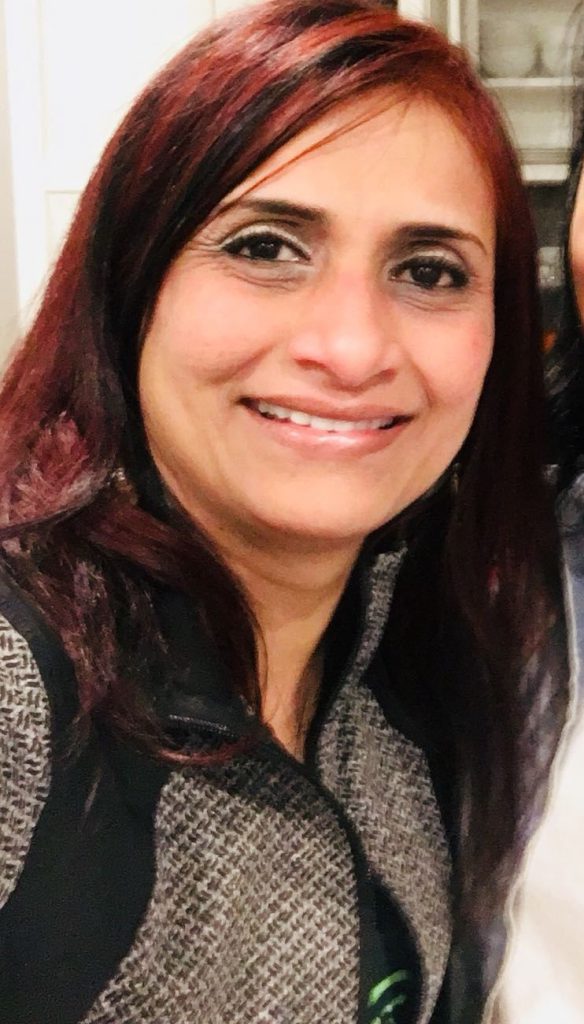
By Rashida Rangwala The practice of Female Genital Mutilation/Cutting (FGM/C) in the Bohra community has been a secret and taboo subject for generations. Even today with the education, media and public stories from the survivors who have undergone FGC, the Bohra community truly believes that the practice of FGC on 7-year-old girls is a religious mandatory passage and should be done to ensure future virtuous female behavior, meaning to ensure girls remain chaste until marriage (and not be sexually promiscuous). But, FGC is really not a religious requirement. It is a cultural practice that predates Islam. [youtube url=”https://youtu.be/uIbNbY2n9_o”] I attended the Sahiyo retreat in January 2018 because I wanted to educate myself about the medical aspects of a girl undergoing FGC and to gain from the experience of other activists and survivors. At the Sahiyo retreat I was able to hear, grasp and digest information on FGC and how to approach and begin a conversation about FGC to the mothers and especially the fathers in the Bohra community who have young girls. I am truly convinced that FGC is a barbaric practice and there is documented evidence of harm that is done both psychologically and physically to the girl child and adult woman. I found it shocking to learn that 80% of the 385 participants in Sahiyo’s study had undergone FGC and that 33-34% admitted that it negatively impacted their sexual lives. I want to see an end to this practice in my lifetime. Sahiyo in collaboration with researchers, health professionals, and other FGC experts were able to create resources to help me in my own activism work to prevent FGC from happening to other girls. The brochures and guidance I received at the Activist Retreat has been invaluable in my work as an activist. The research findings from their global study on FGC in the Bohra community published in January 2017 gave me an education on FGC in terms of how widespread it is in the community, the physical and emotional consequences that occur to those who have undergone it, and to learn more about the challenges and barriers that occur in our work to end FGC, as well as best practices in how to try to overcome some of those challenges. To learn more about the U.S. Bohra Activist Retreat, read the report!
My Reflections on Sahiyo’s Activist Retreat and my advocacy on ending FGM/C in the U.S.
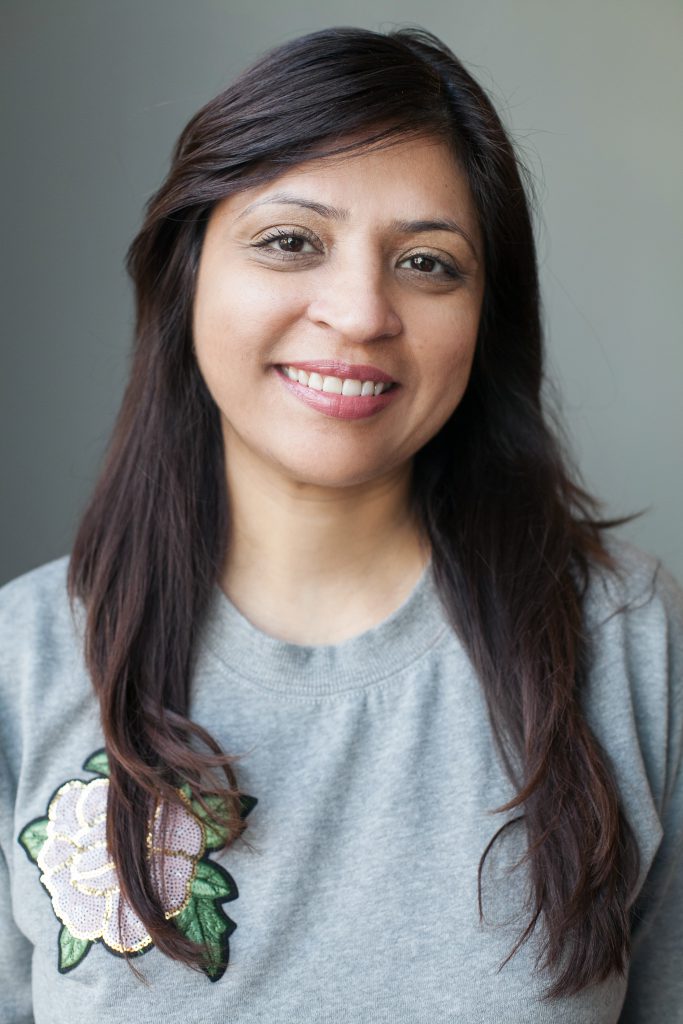
By Alifya Sulemanji Sahiyo organized a retreat for FGM survivors and activists in January 2018. I attended the retreat because I am a survivor and I was interested in learning about different views, challenges and perspectives of other survivors and activists who were planning to attend as well. The retreat was very beneficial in many ways. I was able to meet other survivors and listen to their experiences and learn how they can contribute towards putting an end to this atrocity. It was good to meet people who I could relate to regarding the many aspects of life for a Bohra who is against FGM/C (Khatna), but who still bears a Bohra identity. I have a very vivid memory of being cut at the tender age of seven. It felt like my body was being violated. Even when I was just 7 years of age, I knew something wrong had been done to me as I was told that this thing was a dark secret I was not supposed to tell anyone about. As I grew up I found out that none of my other friends had this religious ritual done, and it confirmed that what had been done to me was wrong. In the past few years, I learned that many other women like me felt the same way. I was encouraged to speak about it through the medium of Sahiyo and WeSpeakOut, groups who are working to end this cruel practice done in the name of religion. [youtube url=”https://youtu.be/UQNb4qRKxJc”] This Sahiyo Activist Retreat gave me insight into how I can talk to other pro-FGM/C people and how I can convey my thoughts on FGM/C to them in a positive way. I also learned that in conversations with them, it is important to try not to make stereotypical judgments about people, based on my own past experiences. The contributions I have made towards creating awareness about the harm of FGM/C (Khatna) have been through storytelling, which at the Activist Retreat we discussed was a powerful method for creating social change. Already, I have written about my own experience of FGC (Khatna) for Sahiyo. I have given interviews to the Detroit Press during the arrest of Jumana Nagarwala, the doctor in the U.S. who in April 2017 was first charged with performing FGM/C on minor girls. The interviews I have given reflected on the reactions of, and repercussions for the Bohra community after her arrest. I also participated in a research study by Laxmi Anantnarayan. Another research study on FGC and survivors’ experiences that I participated in was conducted by a student in India from Manipal college. I also told my story to an Author/writer Firos in India who is writing a book on this subject. I also worked with Owanto, a famous artist, and her daughter Katya Berger, a journalist and graduate from Columbia University who are creating a documentary ‘Thousand Voices’ to depict the effects of FGM/C by sharing the voices of girls who were affected by it. Lastly, I work with the New York Coalition to End FGM and meet with them every 2 to 3 months to work on creating awareness on FGC and to take measures to stop FGM/C and aid survivors. To learn more about the U.S. Bohra Activist Retreat, read the report!
My Empowerment at the Sahiyo U.S. Activists Retreat
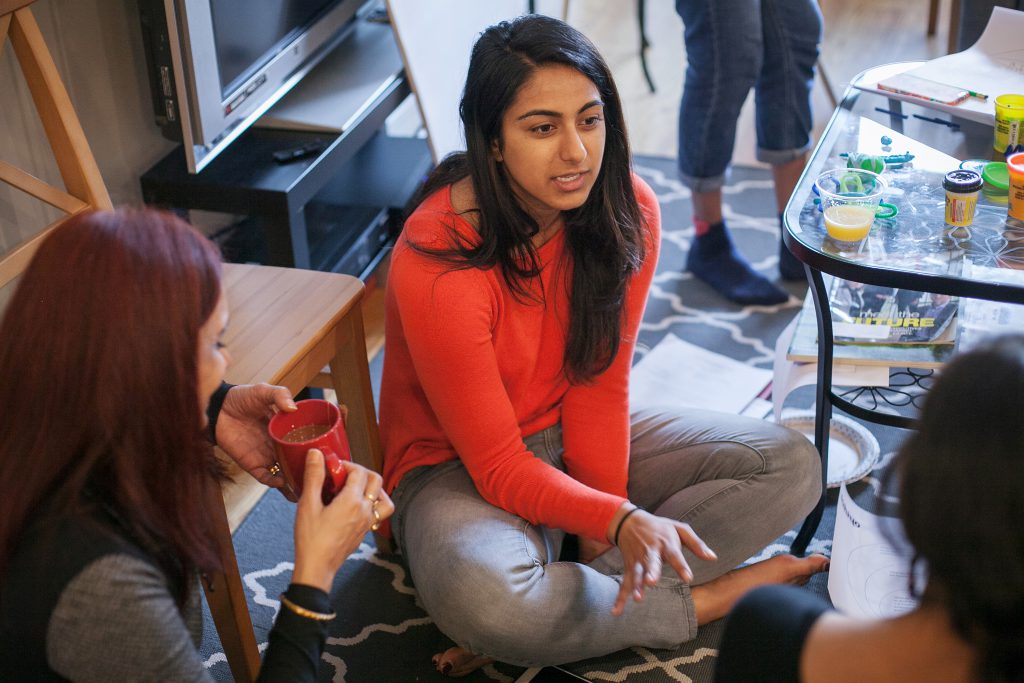
By Anonymous Country of Residence: United States A few weeks ago, I attended the first U.S-based Bohra Activists Retreat held in Brooklyn, New York. Eleven women from all over the country gathered together in a spacious Airbnb to discuss issues surrounding FGC in the Bohra community as well as to get to know each other a little better. As I sat on my redeye flight to JFK, anticipation for the upcoming weekend kept me awake. I wondered how it would feel to be in a room with people who would be able to understand a huge, hidden component of my life. I wondered if I would be able to share my own experiences with the others and if I even had a story worth sharing. I woke up the next morning to sky rises and a chill that turned my fingers blue. But once I was in the company of the other activists, I felt myself warm up. Each participant had a unique story to share and with each shared story, I felt that my own story was comprised of similar sentiments and experiences. During the retreat, everyone was given a safe space to share how much or how little they felt comfortable with. We talked about everything from Khatna experiences and familial and romantic relationships to our careers and favorite foods. We were able to connect with each other on shared experiences in madrasa, masjid, I was able to share experiences unique to myself but more importantly, learn from the stories of those women who had undergone Khatna and who had made life-altering decisions to confront others about the practice. I was overwhelmed by the courage, strength, and free-will that showered over all of us at the retreat. The retreat consisted of speaker-led workshop sessions, open discussions and reflection periods. The workshops were profoundly informative. I was given toolkits for dialogue, statistics and graphs, and comprehensive support material. During our discussions, we participated in healthy debates that sometimes got heated but were never disrespectful. And that became one of my most important takeaways from the retreat. In order to create positive change, I need to be open-minded and receptive to ideas I might not agree with. Leaving the retreat, I felt like a more informed activist. I have raw data and concrete facts tucked away. I have a support system of friends that I can now rely on to be there as listening and supportive ears. On my flight home, I felt unstoppable and empowered. I felt like there were no limits to what a group of strong-willed and fiercely devoted women can accomplish. To learn more about the U.S. Bohra Activists Retreat, read the report!
Sahiyo U.S. Activists Retreat: A reflection
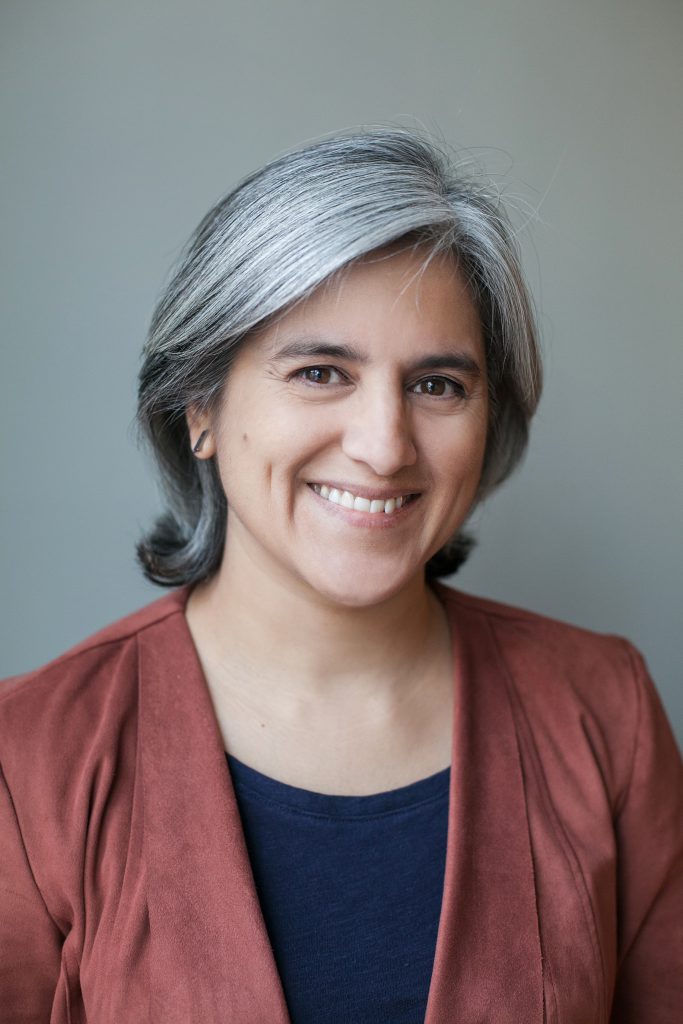
By Zehra Patwa, WeSpeakOut Retreat [ri-treet]: a period of group withdrawal for prayer, meditation, study, or instruction. When I initially signed up for Sahiyo’s retreat for Bohra anti-FGC activists in the US, I thought it would be a good opportunity to network, share ideas, and develop strategies. What I wasn’t prepared for was the incredibly nurturing support I received from the other attendees, as well as from those who ran the retreat. [youtube url=”https://youtu.be/DkxHruB2dl0″] [youtube url=”https://youtu.be/r3U5uv3keEQ”] I have been an anti-FGM/C activist since 2015. Since then, I have been accused of promoting myself to attract attention, to make money, and so that I can shame the community. It’s exhausting and demoralizing. Despite what people may think (and they tell me what they think every day!), I am not comfortable being in the spotlight, I never have, but when I discovered at the age of 42 that khatna/khafd was happening in the Bohra community and that I was also subjected to it at the age of 7, I could not stay quiet. This was the start of my journey. I knew nothing about anatomy, or laws, or religious texts, or social rituals surrounding khatna. I learned everything I possibly could through talking to others in my community, including activists, talking to health and legal experts, reading everything I could find about FGM/C but, mostly, by listening to women’s stories of their khatna experiences and how they had been, and continue to be, affected long into adulthood. This new knowledge has changed the way I see people. I freely admit that I have been guilty of making judgments about people without knowing much about them. However, hearing what many women have gone through has made me realize that there is so much hidden deep in one’s psyche that it’s hard to truly understand why someone feels the way they do. This is where empathy comes in. I do not recall my personal khatna but when I hear other women’s stories, I feel a pain that’s hard to describe. It is visceral and profound and stops me in my tracks. But then I remember that I have a voice and that I’m no longer afraid. I remember that I can be vocal for those who cannot be, and I owe it to them to stand up for them when they feel they cannot speak out for themselves. The retreat has given me the tools to start conversations with those I vehemently disagree with, which was something I found difficult to do. I have learned to be open to others’ points of view and to try to find commonalities in our beliefs. But most of all, the retreat has helped me realize that I am not alone, that many other activists feel the same way I do. I have found a new support network of people that truly understand what I’m struggling with and this gives me the strength to carry on speaking out. To learn more about the U.S. Bohra Activists Retreat, read the report!
Shifting terrains: Lessons learnt from the first U.S. Activists Retreat for Bohras against Female Genital Cutting
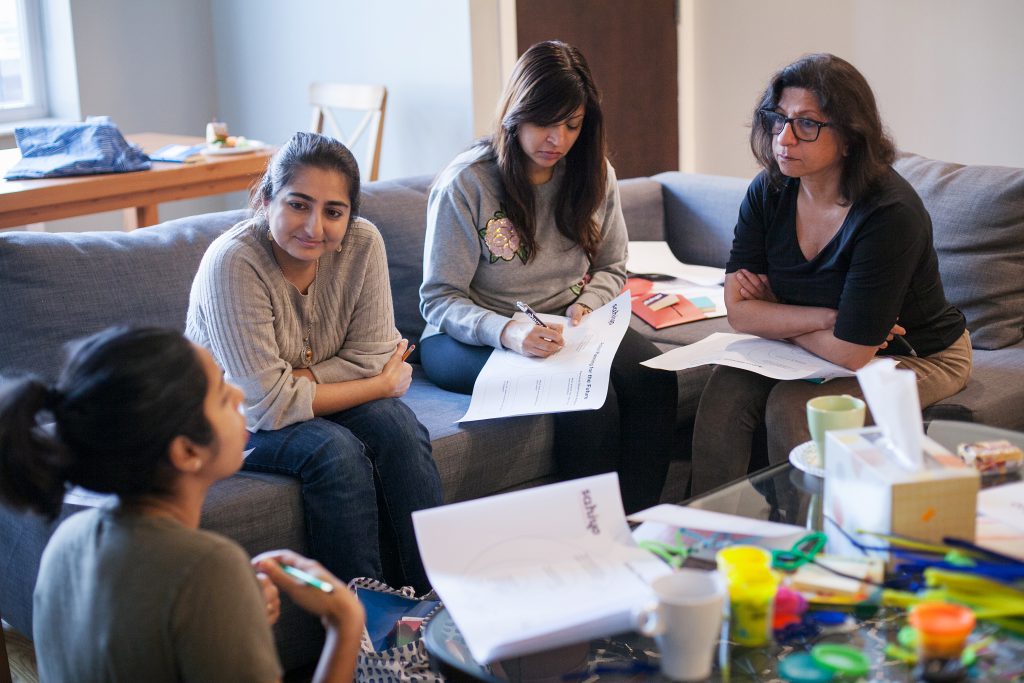
(This post was originally published on the blog of Georgetown University’s Berkley Center for Religion, Peace, and World Affairs, the Berkley Forum) By Mariya Taher, MSW, MFA In this day and age when social media has penetrated our lives, 24-hour news cycles shape our worldviews, and there is never enough time to process the influx of information coming at you, it’s often difficult to remember that social change is slow, hard work, much like pushing a heavy rock up a steep hill. With the #MeToo movement heavy on people’s minds, it’s easy to feel that change is imminent, that no longer will women cower in fear from the sexual harassment and violence generation after generation has experienced due to their genders. Yet, as someone who has dedicated the past ten years of her life towards ending gender violence of all kinds, unfortunately, the real hard truth is that social change does take time, and the seeds of that social change must be planted in the generations proceeding ours before they can even become fruit for future generations of girls and women. That message was one I hoped to convey to the ten women who accepted my invitation to gather in New York on January 19th through January 21st for what my organization Sahiyo called a “U.S. Dawoodi Bohra Anti-Female Genital Cutting Activists Retreat.” The women who came together, like me, had all been born into the Dawoodi Bohra Religion and Culture. Also, like me, these women felt encouraged to take an active role in preventing FGC or “Khatna” as it is known in the Dawoodi Bohra community, from occurring on girls of the next generation. I and my fellow Sahiyo cofounders have been planning this retreat for the past year. (Sahiyo will also host an Activist Retreat in India in mid-February 2018). We planned both these retreats because we had recognized from our own experience, that being an activist is emotionally and physically challenging, and often “we” did this work in isolation from one another. As activists, the challenges we face are often linked to the fact that FGC in our community developed due to a consistent repetition of the practice generation after generation. This caused it to become a deeply entrenched ritual many followed without question because that’s just the way it is. To challenge this norm, meant to challenge the wisdom of those who came before us, and in a sense admit that our religious traditions are fallible. Activists who do challenge FGC, often encounter the wrath of those who would simply let live a practice that has always been done. At the U.S. Activists Retreat, many of us spoke about the negatives that come with challenging your family and friends on the issue of FGC, as well as challenging other social norms an individual may no longer want to partake in. Some women at the U.S. Retreat spoke about the economic boycott their husbands’ businesses encountered, others spoke about friends who no longer spoke to them or about how they feared losing friendship (or support systems they have had since childhood) if they openly discussed FGC. Another woman told us about how she had to call the police on her own brother who harassed her for her activism against FGC and for voicing an opinion that contradicted the edict given by the Dawoodi Bohra religious leaders. In Greek mythology, Sisyphus was destined to consistently push a rock up a hill, only to have it roll back down repeatedly. Like Sisyphus, anti-FGC Activists can consistently be in a position where the rock rolls back down despite our valiant efforts to end FGC, particularly because we are struggling against deeply rooted frames about gender and religion, and the terrain is consistently tilted against us. When you believe you are the only one pushing that rock back up that hill, it can also be lonely. Often the emotional and physical needs of activists are overlooked, as are the struggles they or their families go through so that social change can happen. Prior to meeting the other women who would be the cofounders of Sahiyo with me, I spoke about FGC individually, and independently. I wrote my own story of undergoing it for Global Fund for Women. It was through writing my story that I connected to the additional women who would be my allies. Years later, I have recognized just how much I needed those women to not only validate the fact that my own feelings around Khatna were justified, but to also share in the emotional hardships that come with being one of a few voices who publicly speak against FGC. Connecting with the women who would become the other Sahiyo Co-founders had essentially broken the sense of isolation I didn’t even realize I was experiencing in walking the public life of an activist against FGC. [youtube url=”https://youtu.be/r3U5uv3keEQ”] We imagined it might be the same for other activists speaking out against FGC. The U.S and India Retreats, we believed, could be a space where activists could come together to share both the challenges and opportunities they have found in advocating against FGC. It could be a place where activists could gather, share their pain, their fears, and feel less alone in the advocacy work they pursue. The retreats could also be a safe space where as a team we could formulate action steps on how we could move forward in addressing FGC in our communities. For the U.S. Activists Retreat, as so much attention has been brought onto the topic of FGC since the arrest of Dr. Jumana Nagarwala, a Dawoodi Bohra woman who is accused of performing FGC on girls in Michigan, that discussing these next steps felt crucial. The Activists Retreat was the first of its kind in the United States for women who came from the Dawoodi Bohra culture and religion, and it was a step in the right direction in terms of activists recognizing that to truly ensure that FGC is abandoned by the majority
